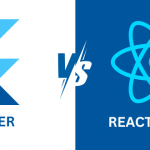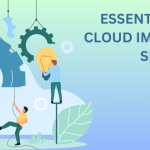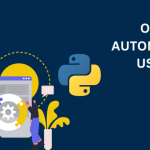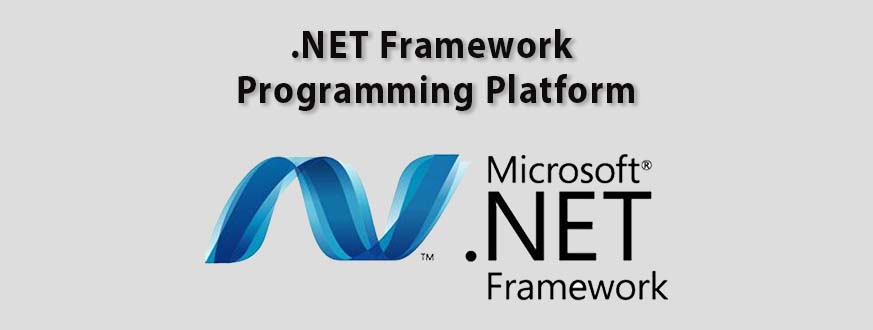In the rapidly evolving landscape of 2024, Digital Product Engineering emerges as the unsung champion, driving a profound transformation in the business realm. As we delve into the intricacies of Digital product engineering in 2024, this blog unravels its significance, explores its various phases, addresses common challenges, extols the benefits of adoption, forecasts future trends, and showcases how our expertise can be a catalyst for your digital product success. Let’s deep dive into it.
What is Digital Product Engineering?
Digital Product Engineering is not merely a process; it’s a dynamic force shaping the future of businesses. At its core, DPE integrates technology, user experience, and strategic vision to conceive, design, and optimize digital products. As we navigate through the phases of DPE, the essence lies in understanding its role in crafting solutions that transcend the conventional. So, let’s understand its phases in-depth.
Phases of Digital Product Engineering
Digital Product Engineering is a finely tuned symphony, harmonizing various phases to bring a concept to fruition. Each phase is a crucial note in the melody of innovation, so the final product resonates with excellence.
1. Conceptualization
The inception of a digital product begins with a spark of creativity. In the conceptualization phase, ideas are born, and the product vision is defined. Brainstorming sessions and market analysis lay the foundation for a unique and impactful digital solution.
2. Design and Prototyping
Transitioning from vision to visualization, this phase involves creating a meticulous blueprint. Design and prototyping merge functionality with aesthetics so that the product can work seamlessly and engage users visually. Prototypes provide a tangible glimpse, allowing stakeholders to interact with the future product.
3. Development
The coding and development phase breathes life into the product. Skilled engineers and developers transform concepts into lines of code to emphasize scalability and efficiency. This stage is where the product takes shape, evolving from lines on a blueprint to a functional digital entity.
4. Testing and Quality Assurance
Before a product makes its debut, it undergoes rigorous testing and quality assurance. Functionalities are scrutinized, potential issues are identified, and iterative refinements are made. This phase ensures that the product not only meets but exceeds expectations when it reaches the hands of users.
5. Deployment
The grand reveal. Deployment marks the culmination of efforts, launching the product for public use. A strategic rollout plan is implemented, considering factors like user experience, market timing, and scalability. The digital creation steps into the limelight, ready to make an impact.
In short, each phase in Digital Product Engineering is a meticulous craft, and the seamless transition from one to the next is the key to success. It’s a journey where creativity, precision, and functionality converge, bringing forth digital products that stand out in a dynamic and competitive landscape.
Now, let’s understand some of the common challenges and their solutions.
Common Digital Product Engineering Challenges and How to Overcome Them
We all know that starting the journey of Digital Product Engineering (DPE) is akin to navigating uncharted waters, where challenges are as inevitable as they are diverse. Recognizing and effectively addressing these challenges is integral to ensuring the success of digital product development. Here, we illuminate some common hurdles faced in DPE and present strategic solutions to navigate through them:
1. Tight Timelines and Agile Adaptation
- Challenge: Pressing deadlines can strain the development process and compromise the quality of the product.
- Solution: You can always embrace agile methodologies. Break down the project into manageable sprints, prioritize tasks, and regularly reassess goals. This iterative approach enhances adaptability and ensures continuous progress.
2. Resource Constraint
- Challenge: Limited resources, be it manpower or technological infrastructure, can impede the development pace.
- Solution: You can optimize resource allocation. Conduct a thorough assessment of available resources, invest in upskilling teams, and consider outsourcing non-core tasks to specialized partners to alleviate the load.
3. Changing Technological Landscape
- Challenge: The rapid evolution of technologies can render initial choices obsolete, requiring constant updates.
- Solution: Stay vigilant and future-proof. You can regularly assess emerging technologies, adopt scalable solutions, and foster a culture of continuous learning within the development team to adapt swiftly to technological shifts.
4. Ensuring Scalability
- Challenge: As a product gains traction, ensuring it can scale without compromising performance becomes crucial.
- Solution: Employ modular architectures, cloud-based solutions, and performance testing to identify potential bottlenecks early on. This proactive approach from your end can ensure that the product can seamlessly grow with user demand.
5. User-Centric Design and Experience:
- Challenge: Meeting user expectations for an intuitive and engaging interface can be challenging.
- Solution: Prioritize user feedback. Conduct usability testing, gather user insights, and iterate on the design based on real-world user experiences. User-centric design ensures the final product aligns with user preferences and needs.
6. Budget Constraints:
- Challenge: Financial limitations may restrict access to advanced technologies or impede the hiring of specialized talent.
- Solution: Strategize cost-effectively. Prioritize features based on their impact, explore open-source solutions, and consider phased releases to manage costs. A well-planned budget ensures optimal utilization of available resources.
7. Ensuring Data Security:
- Challenge: With the increasing threat landscape, ensuring the security of user data is paramount.
- Solution: Institute robust security protocols. Regularly audit and update security measures, encrypt sensitive data, and stay abreast of cybersecurity best practices to safeguard against potential breaches.
Well, addressing these hurdles head-on, Digital Product Engineering can overcome obstacles and pave the way for the seamless creation of innovative, high-quality digital products.
Furthermore, let’s now understand what are the benefits you can enjoy adopting DPE for your business.
Benefits of Adopting Digital Product Engineering
It is evident that adopting Digital Product Engineering (DPE) is more than just a trend; it’s a strategic imperative that promises a plethora of transformative benefits. Here, we delve into the invaluable advantages organizations can reap by embracing the principles of Digital Product Engineering:
1. Accelerated Time-to-Market
DPE streamlines the product development lifecycle and facilitates quicker ideation-to-launch cycles. Rapid prototyping, agile methodologies, and efficient development processes collectively contribute to a significant reduction in time-to-market so organizations can seize opportunities swiftly.
2. Enhanced Product Quality
DPE prioritizes robust testing and quality assurance measures at every phase of development. Rigorous testing protocols and continuous refinement result in your products that not only meet but exceed user expectations.
3. Customer-Centric Innovation
DPE places the end-user at the forefront of the development process. By incorporating user feedback, conducting usability testing, and iteratively refining designs, organizations can create products that align seamlessly with customer needs and preferences.
4. Cost Efficiency and Resource Optimization
Through meticulous resource planning and efficient use of technologies, DPE helps organizations optimize their budgets. Agile development practices, modular architectures, and strategic resource allocation contribute to a cost-effective approach.
5. Scalability and Adaptability
Scalability is inherent in the DNA of Digital product enginering. Products engineered with scalability in mind can seamlessly grow to accommodate increasing user demands. Whether it’s a surge in user traffic or the integration of new features, DPE ensures adaptability to evolving business requirements.
6. Innovation and Competitive Edge
DPE fosters a culture of innovation. By staying abreast of emerging technologies, experimenting with new features, and embracing a proactive approach to updates, organizations can position themselves as industry leaders.
7. Cross-Functional Collaboration
DPE encourages collaboration across diverse teams, breaking down silos and fostering a holistic approach to product development. Cross-functional collaboration ensures that expertise from various domains converges resulting in well-rounded digital products that address both technical and user-centric aspects.
8. Data-Driven Decision-Making
Digital product engineering relies on data analytics to inform decision-making. By leveraging data insights, organizations can make informed choices about product features, user experiences, and market strategies, leading to more successful and targeted outcomes.
9. Global Accessibility
With digital products engineered for scalability and accessibility, organizations can reach a global audience. DPE ensures that products are designed to cater to diverse markets, languages, and user behaviors for expanding the reach and impact of the digital offerings.
10. Continuous Improvement and Adaptation
DPE instills a mindset of continuous improvement. Regular updates, feature enhancements, and proactive adaptation to industry trends ensure that digital products remain relevant, evolving with the dynamic needs of users and the market.
In embracing Digital Product Engineering, organizations not only embark on a journey of innovation but also equip themselves with the tools to thrive in the competitive digital landscape. The benefits extend beyond the development process, impacting the bottom line and fostering a culture of excellence and customer satisfaction.
Now, let’s know more about its trends and how its effect will be in the future.
How We Can help you with our Expertise Digital Product Engineering?
Partner with us to navigate complexities, innovate relentlessly, and deliver excellence. Here’s how our expertise in Digital Product Engineering (DPE) can be the catalyst for transforming your ideas into cutting-edge, market-leading digital products:
1. Holistic Approach to DPE
We adopt a holistic approach to DPE, seamlessly integrating technology, user experience, and business strategy. Our multidisciplinary teams collaborate synergistically so every aspect of product development aligns with your overarching vision.
2. Proven Methodologies and Best Practices
Backed by industry-leading methodologies, we bring a wealth of experience and a robust framework to the table. Our adherence to best practices in each phase of DPE ensures a streamlined and efficient development process to minimize risks and maximize outcomes.
3. Expertise Across Diverse Industries
Our diverse portfolio spans various industries, from healthcare and manufacturing to eCommerce and beyond. Our years of experience as full stack development services provider equip us with a nuanced understanding of industry-specific challenges and opportunities to tailor digital products that resonate within your sector.
4. Innovation at the Core
Our teams are skilled at staying ahead of technological trends. They experiment with emerging technologies and infuse creativity into every aspect of DPE.
5. Agile and Collaborative Development
Agility is not just a buzzword for us; it’s a cornerstone of our development philosophy. We embrace agile methodologies; we foster collaboration and adaptability.
6. User-Centric Design Excellence
We employ user-centric design principles by conducting thorough user research, usability testing, and feedback analysis. The result ischall an intuitive, eye catching and engaging UI that enhance the overall user experience.
7. Robust Quality Assurance
Rigorous testing protocols and quality assurance measures are ingrained in our development process. We leave no stone unturned in ensuring that your digital product not only meets but exceeds the highest standards of performance and reliability.
8. Scalability for Future Growth
Anticipating future needs, we engineer products for scalability. Our tailored solutions are designed to grow easily and seamlessly as per your user base and evolving business requirements.
9. Transparent Communication and Collaboration
We keep you informed at every stage, involving you in decision-making processes and providing regular updates. We ensure that your vision is not just understood but actively shaped throughout the development journey.
10. Dedicated Support and Continuous Improvement
Our commitment does not end with product deployment only. We provide dedicated support post-launch and continually seek opportunities for enhancement. Through ongoing analysis, updates, and proactive improvements, we ensure your digital products remain at the forefront of innovation.
Have an Idea? Get in Touch with us to Build Digital Products
Your idea is more than a concept; it’s the seed of innovation, ready to blossom into a best-in-class digital product. All you need to do is take the next step in transforming your vision into reality by partnering with a top-rated software development company in New-Jersey. We will help you build best-in-class digital products for your business.














